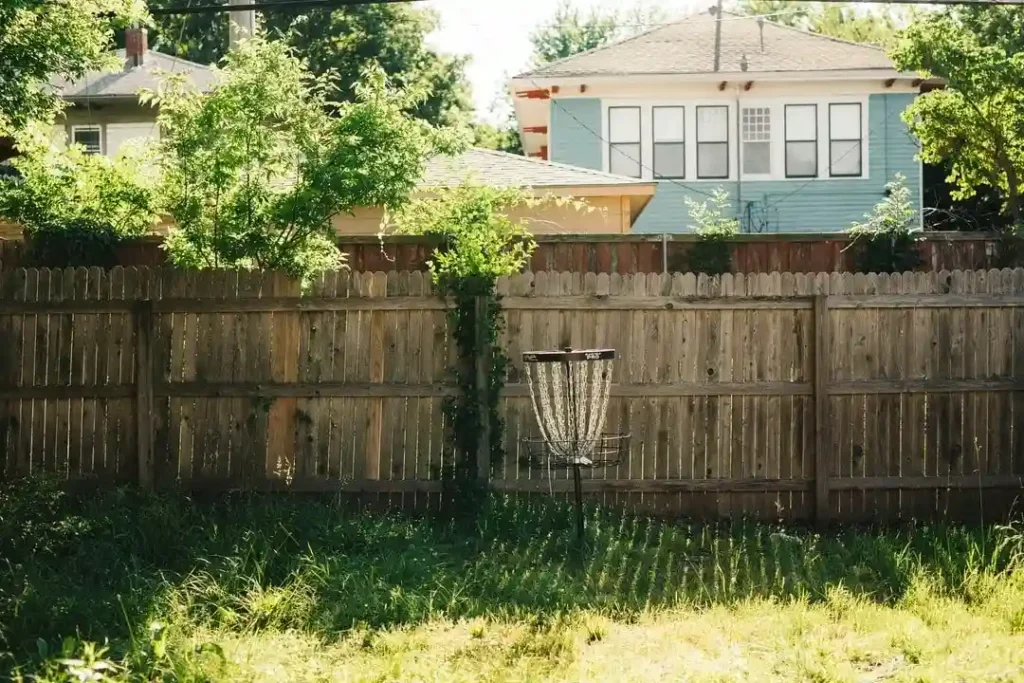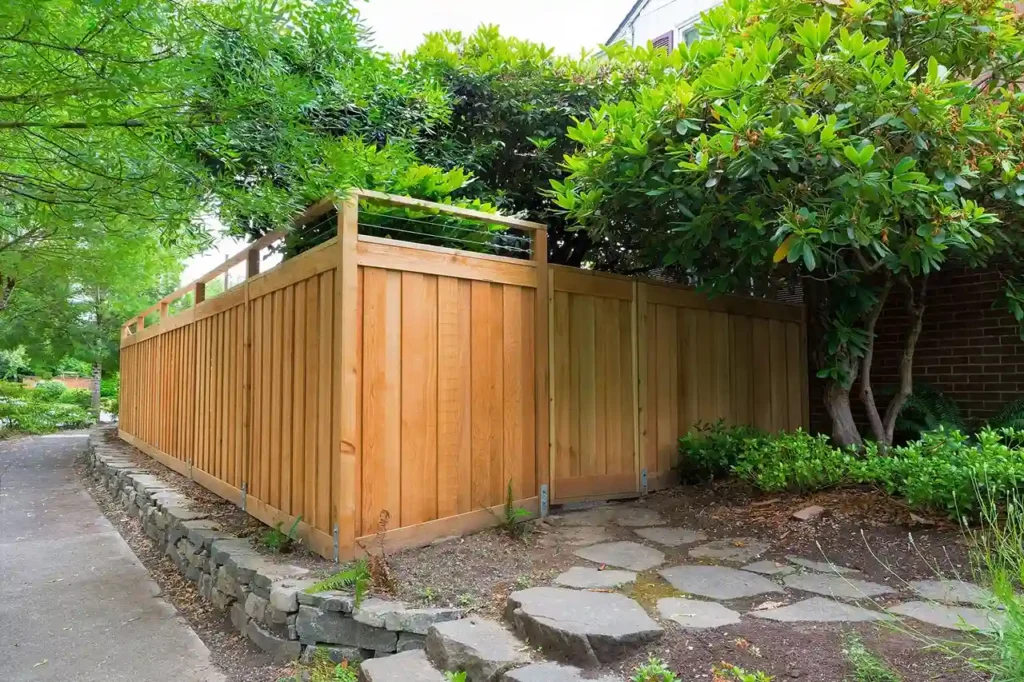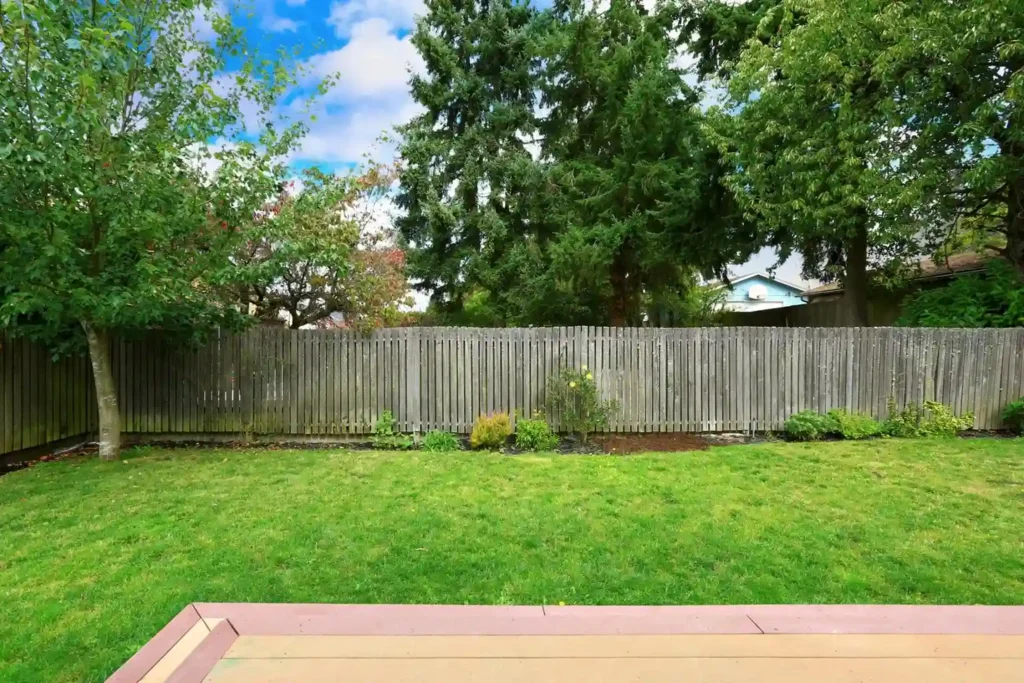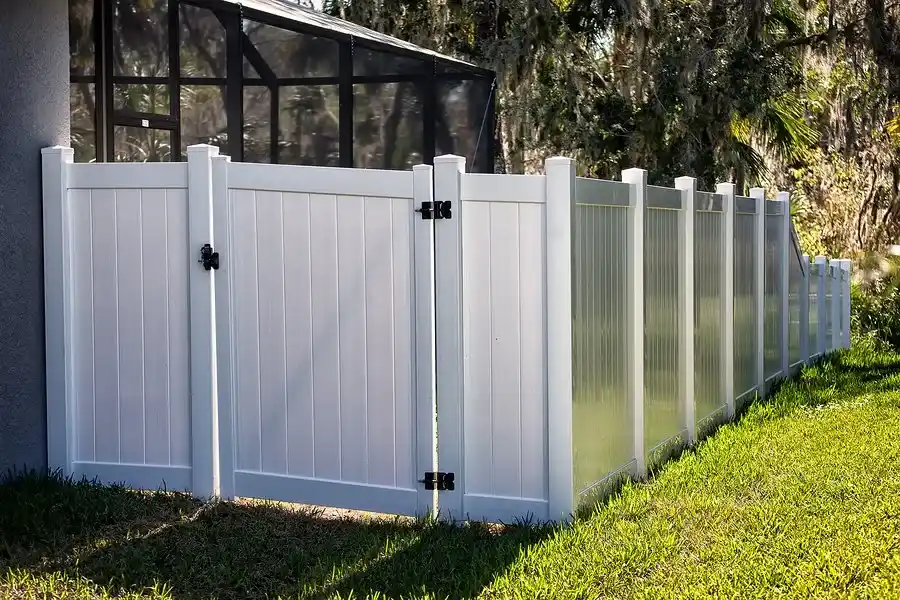Fence Cost Calculator - Your Fence Cost Estimator
Calculate Overall Fence Price with Updated 2025 Data
With Our Fence Price Calculator
Fence Cost Calculator – Get Your Fence Price Estimate
How about installing a new fence? Exciting! But one of the natural question that arise in your mind is “How much does a fence cost?”.
With our user-friendly fence cost calculator, you can get a personalized, instant estimate, empowering you to plan your fence project confidently and carefully. Use our fence calculator to find out!

Why Choose Our Fence Cost Calculator?
With so many variables influencing fence installation costs, getting a quick and accurate estimate can feel complex. That’s where our Fence Cost Calculator makes all the difference:
- Transparent Pricing: No hidden costs or surprises – just real-time estimates based on current 2025 material and labor rates.
- Material Options: Compare costs across various fence types, including chain link, wood, vinyl, aluminum, and composite.
- Customizable Inputs: Enter your yard size, number of gates, and design preferences for a personalized estimate.
- Fast and Easy: Get an estimate in under five minutes, empowering you to make informed decisions.
- Helpful Insights: Understand how your selections impact the cost so you can make smart trade-offs based on your budget.
- Budget Planning: Plan for long-term maintenance and installation considerations by factoring in real-world data.
Whether you’re comparing materials or planning your budget, our calculator gives you a reliable starting point for fence installation.
How Much Does a Fence Cost?
This is one of the most common questions homeowners ask when planning a new fence installation. At BuyAFence, we prioritize transparency and aim to simplify the decision-making process. Whether you’re installing a fence for privacy, aesthetics, pet containment, safety, or security, several factors influence the overall cost, including:
- Size of your yard (measured in linear feet)
- Type and quality of fence material
- Number and size of gates
- Site conditions (slope, terrain, and removal of existing fence)
- Labor costs and permit requirements
We offer detailed estimators and cost breakdowns for different fencing types to help you make informed decisions, avoid unexpected costs, and select the best material for your property.
Understanding Fence Cost Categories
Different fences serve different purposes. From decorative wooden fences to solid privacy options and low-maintenance vinyl solutions, each type of fencing has its unique advantages and pricing. To make planning easier, we’ve provided cost estimators by material and use case. This allows you to explore pricing based on your specific goals and budget.


Wood Fence Cost Calculator
Wood fencing remains one of the most popular choices for residential fencing, combining affordability, natural aesthetics, and moderate durability. It offers a timeless appearance, is customizable in terms of height and style, and is widely available.
Common Types of Wood Fences:
- Pressure-treated Pine Fences: An economical option that is chemically treated to resist rot, insects, and decay. Ideal for budget-conscious homeowners.
- Cedar Fences: More expensive than pine, but naturally resistant to rot and insects. Cedar offers a premium look and requires less chemical treatment.
- Redwood Fences: Often used in the western United States, redwood is durable and visually appealing but typically the most expensive wood type.
Cost and Maintenance:
- Wood fences are mid-range in cost, more expensive than chain link but typically less than vinyl and composite.
- Pressure-treated pine fences cost between $15 to $25 per linear foot installed.
- Cedar fences range from $20 to $35 per linear foot installed.
- Redwood fences can cost upwards of $30 to $50 per linear foot.
Wood fences typically last 15 to 20 years with minimal maintenance. Regular staining or sealing can extend their life to 25 years or more. In moisture-heavy climates like the Midwest, fence post replacement is common after 10 to 15 years due to water damage. Our wood fence cost calculator provides estimates tailored to the size of your yard and preferred wood type, helping you plan your fence installation budget precisely.
Privacy Fence Cost Calculator
Privacy fences are ideal for those looking to block visibility, enhance home security, and reduce outside noise. A standard privacy fence is typically six feet tall and can be constructed from a variety of materials including wood, vinyl, and composite.
These fences often include features like lattice tops, decorative post caps, or reinforced bottom rails. These can add to the overall price but also enhance durability and appearance. Our privacy fence cost calculator lets you enter your yard size, preferred materials, and custom features to get a real-time estimate.


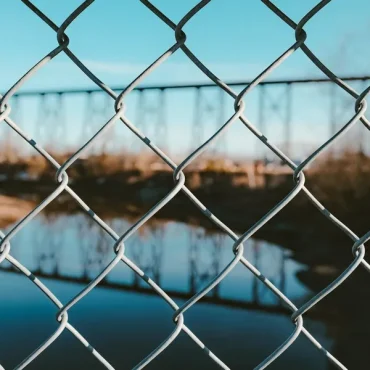


Key Factors That Affect Privacy Fence Cost:
Material type: Wood (pine or cedar), vinyl, composite, or bamboo
Fence height: Taller fences cost more due to increased material usage
Terrain: Sloped or uneven land requires more complex installation
Post spacing and panel size: Can affect both structural integrity and material cost
Privacy Fence Cost Per Linear Foot in 2025:
Pressure-treated pine: $18 to $25 per foot
Cedar: $22 to $35 per foot
Vinyl: $28 to $45 per foot
Composite: $40 to $60 per foot
Privacy fences often include features like lattice tops, decorative post caps, or reinforced bottom rails. These can add to the overall price but also enhance durability and appearance. Our privacy fence cost calculator lets you enter your yard size, preferred materials, and custom features to get a real-time estimate.
Quick Fact:
How much does a 6-foot privacy fence cost per foot?
A 6-foot privacy fence typically costs between $25 and $60 per linear foot, depending on the material:
- Pressure-Treated Pine: $18–$25/ft
- Cedar Wood: $22–$35/ft
- Vinyl: $28–$45/ft
- Composite: $40–$60/ft
Includes both materials and labor. Costs may increase for custom designs, sloped terrain, or additional features like lattice tops or reinforced posts.
What are the Typical Fence Costs in 2025?

Before using our fence cost calculator, please review these yard sizes when it comes to latest fence installation prices.
Fence Cost By Linear Feet In 2025
Most average sized back yards are between 150-250 linear feet. Some larger sized yards are 300-400 linear feet.
For a typical sized back yard, costs vary based on the type of material. Here are some approximate project costs (includes 1 gate):
Average sized yard (150-250 linear feet total)
- Chain Link- $4,000 - $7,000
- Black aluminum- $7,000 - $14,000
- Cedar - $8,000 - $13,000
- Vinyl - $9,500 - $16,000
Larger sized yard (250-400 linear feet total)
- Chain Link- $8,000 - 15,000
- Black aluminum- $13,000 - $19,000
- Cedar - $13,000 - $21,000
- Vinyl - $16,000 - $25,000
Very large sized yard (400+ linear feet total)
- Chain Link- $20,000+
- Black aluminum- $18,000+
- Cedar - $22,000+
- Vinyl - $24,000+
Specialty composite fencing and custom colored vinyl are special order and are typically 50%-100% more in cost than traditional fencing materials. Expect to pay $60–$80 per foot installed for composite and $55–$75 for custom-colored vinyl.

Things to Consider When Calculating Your Fence Cost
As discussed, the size of your yard is a major factor in creating a fence quote. A giant yard will require a significant amount of materials and labour hours, leading to a cost you have not anticipated.
1. Size of Your Yard
The size of your yard is one of the most essential factors in calculating your fence’s cost. Larger yards require more material and longer labor hours, significantly increasing the project’s price. Since most fencing projects are measured in linear feet, even a slight miscalculation in the size can affect the final budget. Measuring the fence accurately or consulting a fencing professional to determine the precise layout and linear footage is crucial. Remember, the larger your yard, the greater the investment, especially when accounting for corners, sloped areas, and potential zoning setbacks.
2. Removal of Existing Fence
If you need to remove an old fence, you must factor in the extra labor and disposal. Whether it’s chain link or wood, tearing down and removing old posts and concrete can take an entire day for a whole crew. On average, removal costs can add $5–$10 per linear foot to your overall fence quote, depending on the material and site condition. Typically, removal costs range from $5–$10 per linear foot, depending on the material and ease of access to the site. A whole crew may need an entire day to complete the removal before new materials can be installed. If you’re budgeting for a new fence, don’t overlook this step—it’s a hidden cost that can significantly affect your total project price.
3. Type of Fence Material
Material selection plays a significant role in your fence’s total cost. Some materials are far more affordable than others. Here’s a rough breakdown, listed from least to most expensive:
- Traditional galvanized chain link fence
- Black chain link fence
- Pine fence
- Cedar fence
- Black aluminum fence
- Vinyl fence
- Colored vinyl
- Composite Fence
Material choice affects upfront costs, long-term maintenance, and durability. For instance, wood is cheaper to install but requires more ongoing maintenance. Vinyl and aluminum offer longer lifespans and lower upkeep.
4. Number of Gates
Gates are necessary for most fencing projects, but can significantly increase your quote. A single gate can add around $400–$500, while double gates—often used for equipment access—can cost even more. When calculating your total fence cost, consider how many gates you’ll need and their sizes. Hinges, latches, posts, and optional features like locks or automation add to the price. Be sure to determine how many gates your yard layout requires, and factor them into your fence quote early in the planning phase.
5. Permits and Local Regulations
Depending on your municipality, a permit may be required to install a fence. Permits generally cost between $50 and $200. Local building codes may also dictate fence height, material, and placement, especially near property lines or public sidewalks.
6. Site Preparation
Installation on sloped land, rocky soil, or densely wooded areas can require grading, debris removal, or specialized equipment. These factors can significantly increase labor costs. Urban areas may also require hand-digging due to underground utilities, further adding to time and expense.
How to Use Our Fence Cost Estimator?

Step 1: Measure Linear Footage Of Your Properties
The first step in measuring your fence is determining the total number of linear feet of fencing needed. Here are four easy ways to measure the linear footage.
- Use a Free Measuring Application
The iPhone has a built-in measurement application, and Android users can find various options on the Google Play Store. These apps allow you to measure your yard perimeter directly from your smartphone.
- Try Google Earth
Access Google Earth via a desktop to measure your property from the satellite view. It is a free and fairly accurate tool for estimating linear footage.
- Walk It Manually
Walk the fence line step-by-step or use a tape measure for more precision. This classic method is accurate and straightforward if you do not have digital tools.
- Count Your Fence Panels
For an estimate, count the number of panels between the posts. Most fence panels are spaced 6 to 8 feet apart, so multiply the number of panels by their spacing. So if you have 50 panels, multiple 50 x 6′ and that’s your total linear footage. This method doesn’t give you an accurate but gives you a ballpark number.
Step 2: Once you have your linear feet, click below to be taken to our fence cost calculator
Step 3: Enter Your Data in Our Fence Cost Estimator
Once you have the total linear feet:
- Enter it into the calculator
- Choose your material (wood, vinyl, etc.)
- Select number and type of gates
- Choose add-ons like decorative elements or staining
The calculator will generate a tailored cost estimate instantly. For greater accuracy, follow up with on-site quotes from professional installers.
Ready For Fence Installation? Contact Our Fence Contractors to Book Your Consultation Below!
Still Unable to Estimate Your Fence Cost?
Fence Installation Cost - Other Considerations
When planning a fence project, understanding all cost variables is crucial as they add to the final cost. The total cost of the fence installation is mixed with factors such as materials, labor, yard size, fence style, and additional site-specific requirements. Here is a breakdown of what to consider when determining the cost of the fence project.
Defining Scope and Purpose
The first step in the overall fence project is to determine the overall scope. This includes measuring the total area to be fenced. Larger yards require more materials and labor, which significantly increases your cost. You should also consider the purpose of your fence—whether it’s for privacy, aesthetics, safety, or pet containment—as this affects both the material selection and design complexity.
Material Cost
Fence materials account for a large part of the cost. Each type varies in cost, durability, and maintenance requirements.
- Wood: Affordable and classic, but requires regular staining and sealing.
- Vinyl: Higher upfront cost, but very low maintenance and long-lasting.
- Aluminum: A good balance of durability and visual appeal with moderate cost.
- Chain link: This is the most cost-effective and ideal for security, but minimal on privacy or curb appeal.
The choice of material affects the installation cost and long-term repairs and upkeep. For example, wood fences may cost less to install but require more frequent maintenance over the years.
Labor Costs
The cost of labor varies depending on the complexity of the location, labor availability, and installer rates. Simple, flat lots cost less, while sloped or rocky terrain, decorative designs, or digging in tough soil may increase labor time and price. Get quotes from trusted fence contractors, and make sure each includes a breakdown of services like post-setting, gate installation, and removal of existing fencing.
Additional Cost Defining Factors
Aside from labor and materials, other elements can affect the project’s overall cost, including the following.
- Fence Style: Taller fences, lattice tops, privacy panels, or custom designs increase expenses.
- Gates: Adding single or double gates adds $400–$1000+, depending on material and size.
- Permits & Local Codes: Some municipalities require permits or follow zoning laws—always check first.
- Site Preparation: Removing trees, old fences, or leveling the ground may incur extra fees.
- Access Limitations:: If it’s hard to reach the install site with equipment, expect added labor charges.
Budgeting Tips and Final Estimate Planning
- Always add a buffer of 10–15% to your final budget to accommodate unexpected issues
- Get quotes from at least 2–3 licensed contractors for comparison
- Ask for itemized pricing that includes labor, materials, gate installation, and optional features
- Use the fence calculator for a baseline and refine it with professional input
FAQs:
Costs range from $25 to $60 per linear foot, depending on material, labor, and customization.
Expect to pay between $15 and $60 per linear foot depending on material and site conditions. Use the calculator to get a more specific estimate.
Wood fencing costs between $15 and $35 per linear foot. Cedar is more expensive but longer-lasting than pressure-treated pine.
Installation typically takes 2 to 5 days depending on yard size, terrain, weather, and materials used.
In many cities and counties, yes. Always check with your local zoning office before beginning installation.
Yes. A well-constructed fence can improve curb appeal, increase privacy, and enhance property security—all of which can raise your home's resale value.

